While I’m not keen on comparing destinations, I totally get why you’re wondering if you should visit Turin or Milan.
Only a one-hour train ride from one another, these cities in northern Italy are two of the largest in the country, both great candidates for a European getaway.
If you only have time to visit one of them, I’m here to explain all the differences and similarities that will help you choose the right destination for you.
*This post may contain affiliate links from which I earn a commission (for more info, read my disclosure). As an Amazon Associate, I earn from qualifying purchases. This post may show pop-ups.
*I try to keep the information on this blog as updated as possible, but I still recommend consulting the latest prices, opening hours, and other details on the official website of each site, hotel, and tour, as well as checking the updated public transport routes and timetables. I share my personal experience and cannot guarantee yours.
*As a partner of the Get Your Guide affiliate program, I got a 15% discount when I purchased my Torino+Piemonte Card. That said, I always share my honest opinions.

Is Milan Worth Visiting?
I’ve heard mixed opinions on Milan. Some say there’s not much to do there, and others can’t get enough of it and keep coming back.
After visiting myself, I can confirm that there’s no shortage of things to do in Milan, and I personally like it very much (and think it’s worth a trip), but I also see why it’s not everyone’s cup of tea.
What’s notable in this city is the contrast between the old and the modern – centuries-old cathedrals and world-class art museums surrounded by luxury brand stores, traditional trattorias alongside fine dining restaurants, and Renaissance architecture vs skyscrapers.
On paper, that sounds like a dream, but in real life, this significant contrast makes some people adore Milan while others don’t think it’s worth the hype, because if only one specific aspect of the city attracts you, many activities might not seem appealing to you.

Is Turin Worth Visiting?
While I’ve heard of people who didn’t like it as much as I did, my peronsal answer is ‘absolutely’! It’s one of those destinations you’re not entirely sure what to expect from because it doesn’t get that much attention, but then it completely surprises and wins you over.
From the beautiful historic center and its landmarks & museums that literally anyone can enjoy to irresistible food, wine and chocolates to stunning surroundings, Turin is an amazing northern Italian city.
I know you can say that about a lot of places, so let’s dive into everything these two cities have to offer.
Shop My Turin Map

– Time-saving ready-to-use map with 75+ of my favorite spots in Turin
– A super useful itinerary builder and optional itinerary review service
– Lifetime access including updates
Things to Consider Before Choosing to Visit Turin or Milan
Number of Tourists
Different sources show different statistics, so I don’t want to mislead you with inaccurate numbers, but it’s no secret that Milan is one of the most visited cities in Italy (and Europe), much more than Turin.
That doesn’t mean that you can’t find quiet places in Milan or that every corner is overcrowded, but it is something to consider when trying to find your ideal city break destination.
That also doesn’t mean that there are no tourists in Turin (most of whom are actually Italians), but it seems like the Piedmontese capital is still a hidden gem and an underrated city, unlike places like Rome, Florence, and Venice (and as you may already know, I adore underrated destinations).
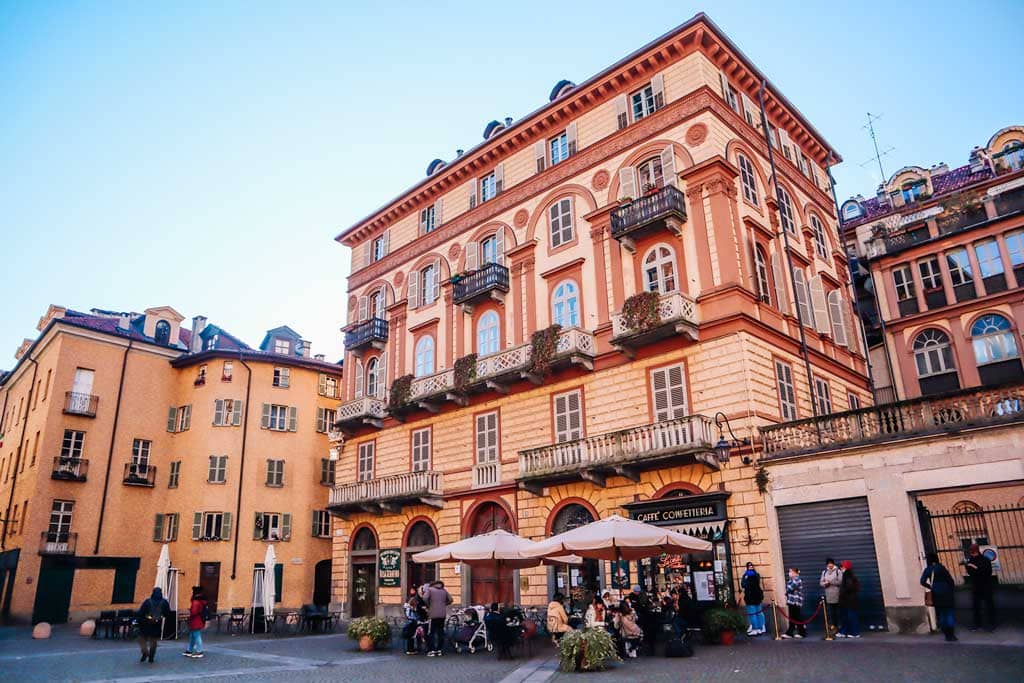
Beauty and Overall Vibe
I’m here to give you my honest opinions, so without sugarcoating anything, I’ll say that both cities are home to beautiful and not-so-pretty areas.
Turin has its lovely historic center and the elegant Crocetta neighborhood, and Baroque is the dominating architectural style, while Brera and Corso Garibaldi were my favorite spots in Milan, a leading Italian Renaissance city.
That said, I did find Turin more pleasant to wander around. I also enjoyed the atmosphere of both Turin and Milan, probably because I’m a sucker for northern Italy in general.
But again, I have to give the advantage to Turin, mainly because it’s a lot less touristy, so it feels more traditional and authentic.

History
I don’t know if you’ve ever picked a destination because of its history, but since it makes a huge difference in the kinds of landmarks you can visit, I thought I’d give you a quick introduction to Turin and Milan’s past.
Both areas were inhabited since ancient history and settled by the Roman Empire.
Fast forward, Milan was ruled by the noble Visconti family and the House of Sforza, and later, by the Spanish and Austrian Habsburg monarchy, while Turin was the capital of the Duchy of Savoy, Kingdom of Sardinia, and the unified Kingdom of Italy, all ruled by the House of Savoy.
Both cities were also temporarily governed by Napoleon, so as you can see, Milan and Turin are strongly connected to powerful dynasties.
Now it’s time to introduce you to some of the most amazing historical landmarks from those significant eras, so you can decide which ones you’re more eager to visit.

Historical Landmarks
Top Landmarks in Milan
You might not expect that, but some of the most notable monuments in Milan are religious sites.
The most famous one is, of course, the Duomo di Milano (Milan Cathedral), the city’s crowning glory. This impressive Gothic building is one of the largest churches in the world, which took almost 600 years to complete. No matter how many photos of it you’ll see, admiring it in real life will take your breath away.
Near Parco Giovanni Paolo II, you’ll find the 5th-century Basilica San Lorenzo Maggiore alongside the Roman-era Columns of San Lorenzo.
Also worth visiting are the 4th-century Romanesque-style Basilica of Sant’Ambrogio and the Church of Santa Maria delle Grazie, a UNESCO World Heritage Site with a museum that houses Leonardo da Vinci’s infamous Last Supper mural.

Next to the Duomo, you can’t miss the world’s oldest shopping center, the beautiful Galleria Vittorio Emanuele II, which dates back to the 19th century.
Unless you’re looking to buy from luxury brands such as Louis Vuitton and Swarovski, I can only assume you’re not actually going to shop there (even the more affordable Louis Vuitton handbags require some splurging), but the architecture is totally worth admiring, and you can also have a meal or coffee there (head to Marchesi 1824 for dessert).
A stone’s throw away is the 18th-century La Scala opera house, where you can enjoy ballet, opera, and classical music concerts and performances or take a behind-the-scenes tour.
Last but not least, the stunning medieval Sforza Castle (Castello Sforzesco), which served as a fortress and a royal residence of the House of Sforza, is another highlight in Milan.
It’s home to eight museums, such as the Pinacoteca del Castello Sforzesco, the Museum of Ancient Art, and the Museum of Musical Instruments, which you can visit for a small fee, but you can also just admire its exteriors and wander around its charming courtyards for free.
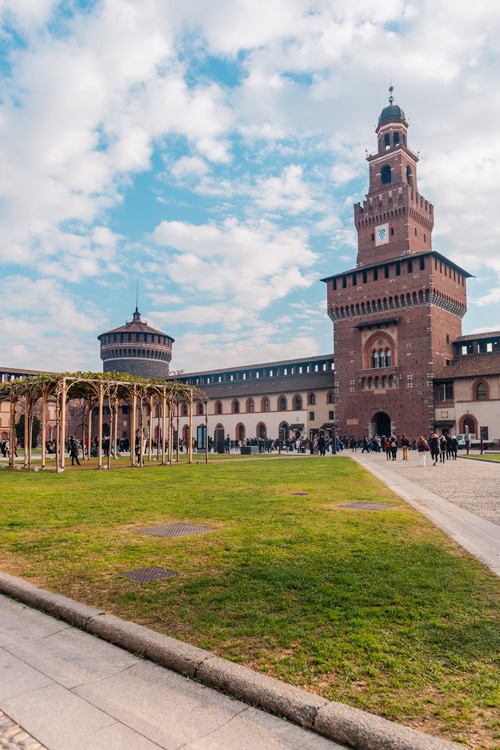

Top Landmarks in Turin
As someone who adores Italian palazzos and villas, I was thrilled to visit so many in Turin and around it.
The entire region of Piedmont is home to more than 10 royal residences of the House of Savoy, a UNESCO World Heritage Site, several of which are situated in the city itself.
The most important one is the 16th-century Palazzo Reale (Royal Palace), which will also give you access to the entire group of Royal Museums (Musei Reali), including the Royal Armoury, Galleria Sabauda, and Museum of Antiquities. This was the Savoy family’s main seat.
Next to it is Palazzo Madama, which now functions as an art museum, and nearby, you’ll find Palazzo Carignano.
On the other side of the river stands the lovely Villa della Regina with its stunning park, and Valentino Park hides the enchanting Castello del Valentino.
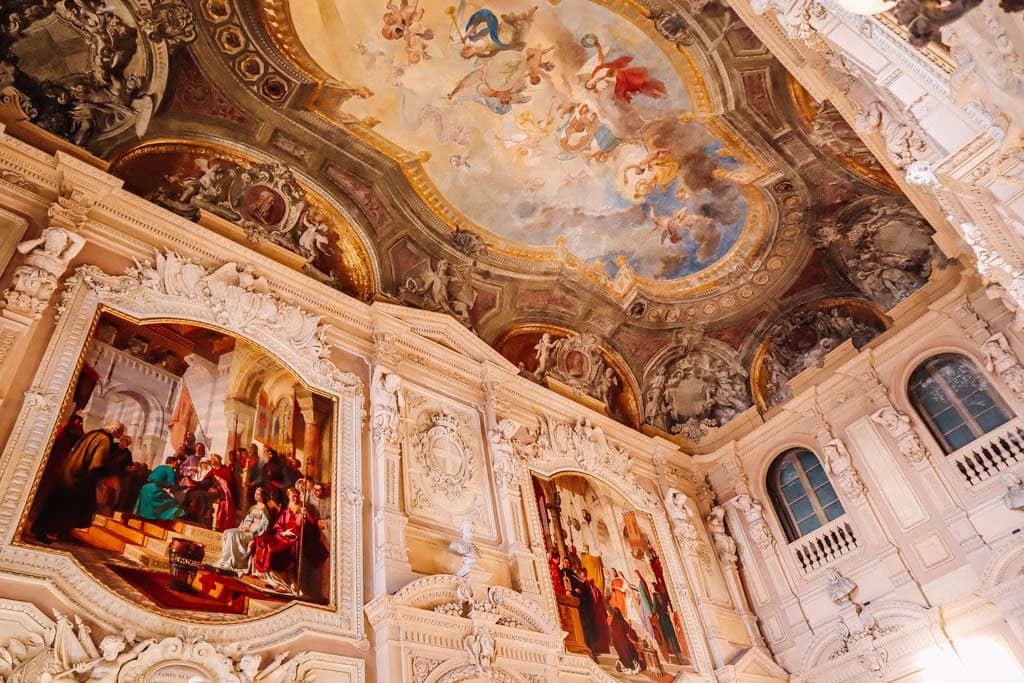
If you’re looking for other types of monuments, the park is home to another photogenic Turin landmark, the Borgo Medievale, a gorgeous replica of a medieval Piedmontese village.
Let’s not skip out on the most prominent building in Turin’s skyline, the impressive Mole Antonelliana, which houses the National Museum of Cinema, the world’s tallest museum!
If that’s not enough, the Roman-era Palatine Gate, the 15th-century Turin Cathedral (home of the Shroud of Turin), and the Pantheon-like Church of Gran Madre di Dio will surely impress you too.

Museums
Museums in Milan
Italy is renowned for its world-class museums. Milan’s forte in that aspect is art, design, and history, so if you’re a hardcore museum lover, this city might be the right one for you.
I’ve already mentioned the Sforza Castle, which houses eight museums (art, archeology, and more), as well as the museum in the complex of the UNESCO-listed church of Santa Maria delle Grazie, where you’ll find Da Vinci’s Last Supper. But that’s just the tip of the iceberg.
Considered one of the most exquisite galleries in all of Italy, the Pinacoteca di Brera is home to an Italian art collection with pieces from eight different centuries. At Gallerie d’Italia, you’ll find artworks from the 19th and 20th centuries.
Design lovers will enjoy the ADI Design Museum, the Triennale, and the Armani/Silos fashion museum, and if that’s not enough, more art awaits you at Museo del Novecento, GAM, and Museo Poldi Pezzoli.
If you’re looking for something different, you can also add the Leonardo Da Vinci Museum of Science and Technology to your Milan itinerary.

Museums in Turin
What I adore about Turin’s museums is that many of them cater to all ages and that even travelers who are not avid museum lovers will be eager to visit them.
I’ve already mentioned the Mole Antonelliana, which houses the jaw-dropping National Museum of Cinema, and the Musei Reali (Royal Museums), which include the Palazzo Reale (Royal Palace), the Galleria Sabauda, the Royal Armory, and the Museum of Antiquities.
Also situated in the historic center is the mind-blowing Egyptian Museum, the second-largest in the world. It is an absolute must-visit, boasting an impressive collection of antiquities such as papyrus, tombs, statues, and even mummies.
Another spot I’ll gladly go back to is the interactive Lavazza Museum, which takes you on a fascinating journey through the Turin-born brand’s history and coffee production process.
I also loved the National Automobile Museum with its beautiful collection of vehicles (from 19th-century cars to futuristic ones).
If you find yourself missing the “classic” art and history museums, head to Palazzo Madama (which houses the municipal museum of ancient art), Accorsi Ometto Museum of Decorative Art, GAM, Museum of the Risorgimento, or Gallerie d’Italia (only open in Turin since 2022).
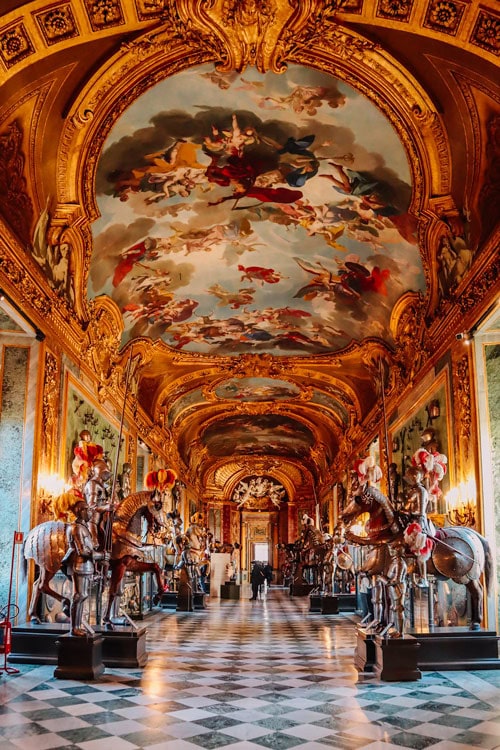
Other Points of Interest
Beyond sightseeing, wandering freely around both cities will allow you to discover other exciting points of interest.
Milan has its canal district, Navigli, which I loved exploring, but it’s definitely not the “Venice of Milan”, so I get why some people were not too impressed by it. It’s pretty serene in the morning and comes to life after dark.
And if you love strolling through parks as much as I do, don’t miss the vast Parco Sempione and the Guastalla Gardens, a total hidden gem in Milan.
Turin is also full of fun surprises, including the scenic lookout point of Monte dei Cappuccini, Porta Palazzo (the largest outdoor market in Europe), and the Balon del Sabato flea market.

Accommodations
Both cities are home to all types of accommodations, from hostels, aparthotels, and apartments to guesthouses, B&Bs, and boutique hotels, so in that aspect, you have a variety of options.
That said, when it comes to your budget, note that Milan is significantly more expensive.
For example, in Turin’s historic center (the best area to stay in the city for first-time visitors), it’s possible to find highly-rated (8.5+) mid-range accommodations for €100-€150 per night (a double room or an apartment). Accommodations in other neighborhoods can be more budget-friendly.
In Milan, €100 (maybe slightly less than that) can get you two beds in a dorm room in a hostel, not necessarily in the heart of the city center, where it’ll be very rare to find accommodations rated 8.5+ for less than €150-€200 per night (most accommodations are pricier).
That is what you’ll pay even in less central areas in Milan (though you might find deals for €120-€130).
If you don’t mind spending more, it won’t be a problem to find your ideal place to stay in either city, though I still think the value for your money is better in Turin.
To help you understand what to expect in terms of prices and location, here are a few examples of mid-range accommodations in Turin and Milan:
- Porta 92 Romana (Milan)
- Castello Guest House Milano (Milan)
- Q71 Timeless Suites (Turin)

Budget
So we’ve already established how much money you’re likely to spend on accommodation, but what about attractions and food?
In Turin, where I believe you’ll want to visit quite a few landmarks and museums, you can buy the Torino+Piemonte Card and enjoy the high value of this one-time investment.
Instead of paying €10-€18 for each site, the Torino+Piemonte Card offers FREE entrance to most attractions in the city and region. It’s reasonably priced in comparison to what you get, so it actually saves you money (the 5-day card saved me at least €50).
Similarly, Milan has the Milano Card (cheap but only offers a small discount on attractions) and the Milan Pass (offers free entrance to some sites but is pricey), so neither seemed worth it to me.
That means you’ll still spend quite a bit on attractions in Milan (each one costs €5-€20), card or no card.
Regarding food prices, you can find cheap eats (€5-€7) in both cities (yes, even in Milan, especially if you love street food), as well as mid-range traditional trattorias and more expensive fine dining restaurants.

Food
It’s safe to say that delicious meals await in every corner of Italy, and if you’re longing for comfort food, northern regions like Piedmont and Lombardy have got you covered.
Piedmont is the region where the sustainable Slow Food movement was born, and its typical dishes include gnocchi al Castelmagno, risotto al Barolo, and agnolotti (a type of stuffed pasta).
Let’s also not forget that Turin is the Italian chocolate capital – the birthplace of solid chocolate (that’s right) and the heavenly combo of cocoa and hazelnuts – so if you’re a chocoholic, this city will win you over (and you must try gianduiotto, cremino, and bicerin).
Milan is also a foodie’s paradise, with dishes like polenta, risotto alla Milanese (with saffron), and riso al salto (crispy rice pancake).
In both cities, it’s also easy to find risotto or fresh pasta with porcini mushrooms (a favorite of mine). In addition, Turin and Milan boast a variety of historic cafes and pasticcerias (Italian pastry shops), international cuisine restaurants, fine dining restaurants, and more.
That said, it’s important to do your research to avoid tourist traps and enjoy the best food and wines.
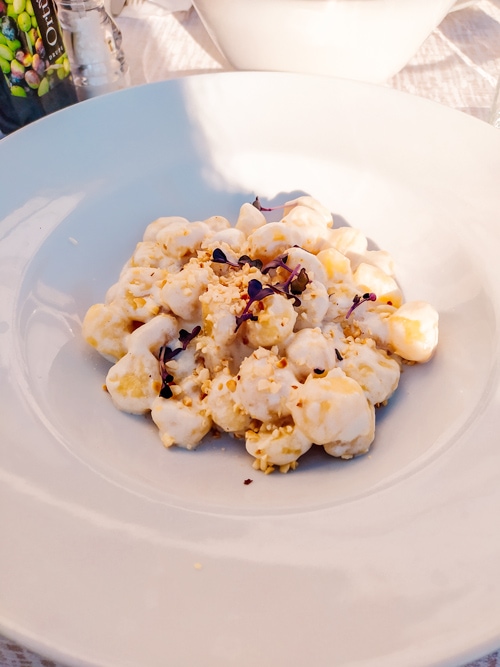

Shopping
If you’re wondering which city is a better shopping destination, Milan or Turin, I’ll say it depends on what you’re looking for in a shopping destination. Is it cheap prices? A large variety of stores? Unique items?
Known as a fashion capital, Milan is automatically seen as a city where you can shop till you drop, but how much are you willing to spend?
In many places, such as the Galleria Vittorio Emanuele II, Rinascente shopping center, and Fashion District, you’ll mostly find luxury brands like Prada and Gucci or high-end concept stores.
On Via Torino, you’ll find more affordable brands, including Stradivarius, Mango, and Primark. You can also look for local boutiques, vintage shops, and outlets in Milan, but prices vary.
Turin also offers a mix of luxury and everyday brands (find them on Via Roma, Via Lagrange, and Via Garibaldi in the historic center), yet it feels more balanced.

Nightlife
I’m not gonna lie – I’m not a night owl and not a nightlife kind of person, so I’ll do my best to help you understand what each city has to offer after the sun sets.
Starting off with the Italian happy hour – the aperitivo tradition – you might be surprised to know that it was born in Turin.
In both cities, most cafes, restaurants, and bars offer an aperitif, which includes a drink and some snacks, though some places open a full buffet.
What’s next?
In such a trendy, cosmopolitan city like Milan, it’s no surprise that you’ll find a good mix of clubs, high-end cocktail bars, live music shows, cozy pubs, and more.
Turin is also diverse in that aspect, and if you’re visiting for only a few days, you’ll have more than enough options, though in Milan, due to its size and the high number of tourists, you’ll have things to do at night in almost every neighborhood and more venues to choose from.
Day Trips
While you can technically visit Turin as a day trip from Milan and vice versa, that wouldn’t be the most common thing to do.
From Turin, you should definitely travel to beautiful places in Piedmont, including the Palace of Venaria, Palazzina di Caccia of Stupinigi, and Alba.
The region, in its entirety, is quite underrated, so this is a wonderful opportunity to explore northern Italy off the beaten path.
In Milan, you have even more day trip options, as its bustling train stations connect it to dozens of cities and towns across several regions.
From destinations in Lombardy, such as Lake Como, Bergamo, and Brescia, to must-visits like Verona, Bologna, and Florence, the number of places you can get to in less than 2 hours is uncanny.
That said, I wouldn’t try to see some of these cities in just one day, so choose your day trips wisely.

When to Visit
Considering their location in Italy and proximity to one another, Milan and Turin have similar weather throughout the year.
I visited both in December when they wore a festive look (which I obviously loved), and I got lucky with cold yet mostly sunny days, so I think they make fantastic winter destinations in Europe.
You can read more about Turin in winter and Milan in winter or check out other places in northern Italy to visit in winter.
That said, quick average-temperature research proves that they’re great to visit from spring to fall, though rainy days should always be taken under consideration. I also visited Turin in October and loved it (Milan is also considered one of the best places to visit in northern Italy in October).
In terms of special events, apart from Easter and Christmas celebrations, it’s good to know that there’s no shortage of unique occasions to attend.
Turin hosts events like the Torino Jazz Festival in the spring, the electronic music Kappa FuturFestival in the summer, and the chocolate festival CioccolaTÒ in late fall.
Milan also has its jazz festival, as well as Carnival in February (Carnevale Ambrosiano), fashion weeks in February and September, and the rock Milano Summer Festival.

Getting Around
Even if you plan the most efficient, walkable itinerary, you will still have to use public transport in Milan and Turin. But don’t worry, they both have a great system of metro, tram, and bus lines.
Because of the stations’ location, the metro is very convenient in Milan, while you’re more likely to use buses and trams in Turin.
Single, daily, and multi-day tickets are all available, making it extremely easy and budget-friendly to get around these cities.
How Much Time Is “Enough” in Each City
I’m all for Slow Travel, but I know the time limitations most of us have, so it’s important to find the sweet spot between having enough time to experience these cities properly and keeping it practical.
Turin itself deserves at least a 4-day long weekend (Friday-Monday) and extra time for day trips. Some will say I’m exaggerating, but I stand by what I said because I explored this city thoroughly.
Milan is a bit tricky because how much time you’ll want to spend in the city depends on your interests. Personally, I recommend exploring Milan for three days and then taking at least one day trip out of dozens of options.
In both cases, if you book a trip of 5-6 days, you’ll have the flexibility of spending more or less time in the city and taking more or fewer day trips. Obviously, if you’re short in time, you can also enjoy them in 3-4 days.

Locals
Bad incidents with locals can ruin your trip or at least make you negatively remember some parts of it, so I’m happy to say that locals were very friendly in both Milan and Turin and that I personally only had positive experiences.
Who Are You Traveling With
Turin can be an amazing destination for all kinds of groups of travelers (AND solo travelers) – mother & daughter, a group of girlfriends, couples, families, etc.
I wouldn’t be keen on traveling alone in Milan (though it’s very much possible), and while you can find things to do there with kids, I think they’ll enjoy Turin more.
Safety
In any European city, you should be aware of pickpockets and avoid walking at night in sketchy areas, so even though both Milan and Turin are considered safe for tourists, following basic safety rules is always recommended.
Again, because Turin is less touristy, I felt less concerned about pickpocketing (not indifferent, just not as worried as I was in other destinations in Europe), but there’s no reason to be scared about visiting Milan either.

Choose Turin vs Milan If…
- You want to visit an underrated authentic Italian city
- You’re looking for non-conventional museums that people of all ages will enjoy
- Royal palaces are right up your alley
- You’re a chocoholic
- You’re looking for a base to explore the region of Piedmont
Read more about Turin:
- Things to do in Turin
- Turin travel tips
- Long-weekend itinerary for Turin
- Cafes in Turin
- Reasons to visit Turin
- Aosta Valley road trip from Turin
Choose Milan vs Turin If…
- You want to visit a trendy cosmopolitan city
- You love “classic” art and history museums
- You enjoy visiting cathedrals and churches
- You’re looking for a vibrant nightlife scene
- You don’t mind spending some extra cash on accommodation, attractions, and shopping
- You want to have a variety of day trip options in several regions
Read more about Milan:
Milan or Turin: My Personal Choice
I loved Milan. I really did. I had an amazing trip, and I do think Milan is worth visiting.
But I fell in love with Turin at first sight. It was a gift that just kept on giving – I enjoyed discovering an authentic historic city that wasn’t overpromoted on IG, every one of the landmarks and museums was beyond exciting, my chocoholic needs were met, and the overall atmosphere was truly enchanting.
Now, let me know in the comments if this post was helpful and which city you decided to visit!
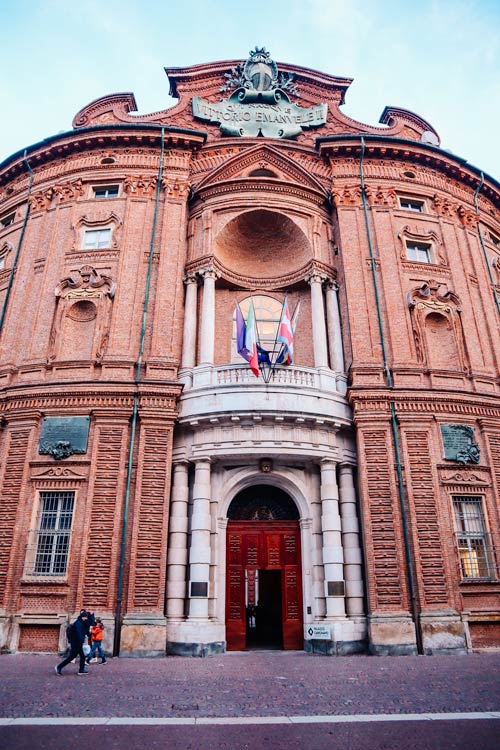
More Italy Travel Guides
Read more about Italy:
- Things to do in Vicenza
- Northern Italy road trip itinerary
- Day trips from Milan in winter
- Places to visit in Italy in winter
- Road trips in Italy
- Italy travel quotes
- Italian piazzas
- Romantic novels set in Italy
- Gifts for Italy lovers
- Places to visit in Central Italy
- Best girls’ trip destinations in Europe


*Your emil address will not be published. By using this form you agree with the storage and handling of your data by this website